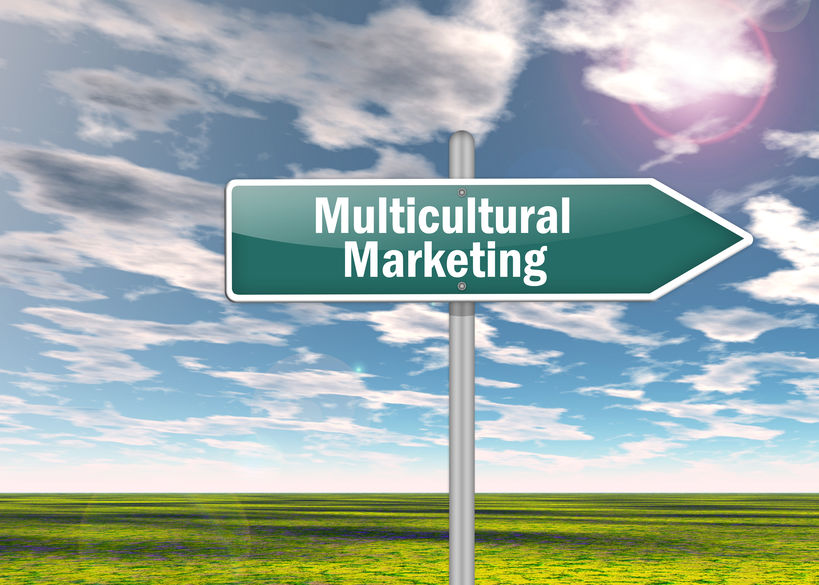
Multicultural consumers represent approximately 40 percent of the population, yet only five percent of marketing spending is multiculturally oriented. When executed well, multicultural marketing—the targeting and reflection of different ethnicities and cultures within a brand’s overall audience—can unite people, empower groups and capitalize on culturally connected populations. When executed poorly, it can lead to backlash and a potentially devastating brand image. A comprehensive multicultural marketing strategy considers more than different ideals, backgrounds and cultures. It is an inclusive mindset. As such, as global markets continue to open, it is essential to consider these opportunities as part of an international and interconnected marketing strategy.
Building a Multicultural Foundation
Experts say the general market now IS the multicultural market. “Today’s marketplace is multicultural, and the so-called ‘minority’ population is the majority,” says Lisa Skriloff, president of Multicultural Marketing Resources, Inc. and editor of Multicultural Marketing News. International corporations have long recognized the importance of multicultural marketing. According to Marc Pritchard, chief brand officer of Proctor and Gamble, “The days of general audience and general marketing are gone and that is a good thing. People want to see themselves, and to see brands with points of view—that is what is going to connect with people,” he said in a presentation at the Cannes Lions International Festival of Creativity. “If you are not doing multicultural marketing, particularly in a place like America, you’re not doing marketing.”
4 Steps for a Multicultural Marketing Strategy

In order to create an effective multicultural and international strategy, it’s important to start with a strong foundational understanding.
- Step One: Evaluate your internal culture and attitudes toward diversity and inclusivity within the organization. It’s virtually impossible to connect with multicultural segments via marketing and sales if your company doesn’t value and promote diversity within. The reality is, 85 percent of the advertising, communications and marketing workforce identifies as white. According to a panel of experts brought together by WHOSAY, a lack of diversity on decision-making teams can often stunt a brand’s ability to craft authentic, effective messaging. It’s important to galvanize your multicultural workforce whenever possible to ensure that point of view is heard and prioritized. Consider incorporating these ideals in your vision and mission. By incorporating multicultural inclusivity, varied demographics and international segments from this first step, every decision can be measured by the same set of values.
- Step Two: Identify your local footprint. There will be a wide variety of demographics to consider. Some are more concentrated in certain areas than others. Start by understanding your neighbors and your community. For example, if your company is based in Los Angeles, it will make sense to prioritize research and understanding of the Hispanic and Latino segment because they make up some 47 percent of the population. When researching, consider purchasing habits, values, traditions, priorities, challenges and needs. These concepts may vary from segment to segment, or you may discover overlaps. Do your research and take advantage of nearby or internal resources first and foremost.
- Step Three: Think about the multicultural aspects of the national outreach of your company. If you’ve maximized your local and internal resources, it’s time to go further. With digital connectivity and logistical advances, it’s likely your goods and services can reach new distances. Data and research are fundamental to unlocking authentic connection. Rather than homogenize your brand messaging in an attempt to please everyone, localize it. Then pinpoint specific values, pain points and sentiments of those buyer personas. Utilize localization techniques to employ a local, create a new branch or outsource an agency in that new demographic. How does this change your corporate messaging? Which taglines, brand identities, distribution methods or mediums resonate with the values of this segment? Understanding these differences will greatly improve the success of your marketing outreach.
- Step Four: Consider the viability of the global marketplace. Moving even further out in a highly connected world, determine the size and viability of expanding internationally. Recent events and technology have proven that when done correctly, global opportunities can increase revenue and profits. What does this mean for your company? Determine if your products or services solve worldwide challenges. Identify the culture, laws, language, packaging, promotion, supply chain and other operational issues in foreign counties and see if expanding into these areas makes sense. If you need additional expertise to understand these variations, don’t be afraid to outsource to an expert to ensure authenticity in messaging in worldwide markets. A common mistake is “Not including multicultural experts in the planning and execution of marketing programs,” Skriloff says.
One Size Doesn’t Fit All

The continued growth of the global market and multiculturalism within countries is leading to a more connected world. Rather than create a one-size-fits-all marketing strategy, embrace the idea that different cultures can lead to different values, interests, challenges, needs and behavioral tendencies. By tapping into the nuances of certain cultural segments, marketers can better understand these markets and create content, products and services that resonate and connect with diverse groups.
